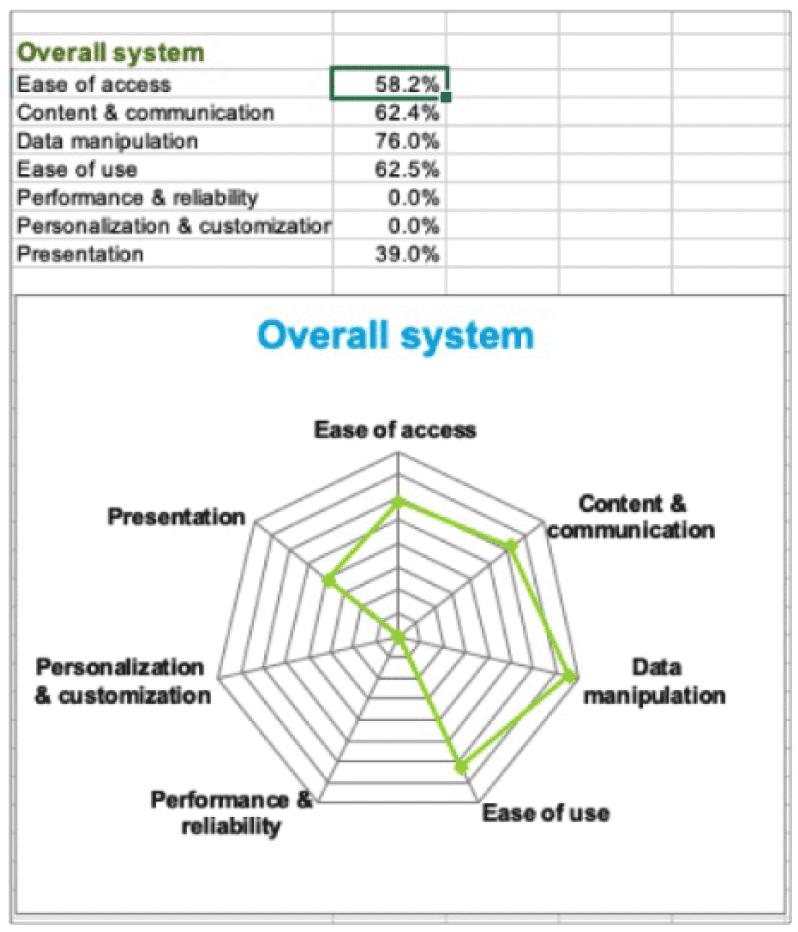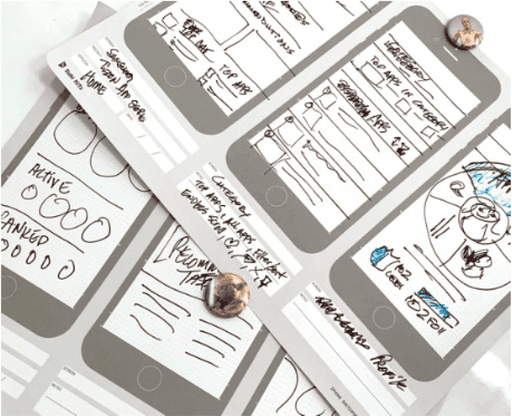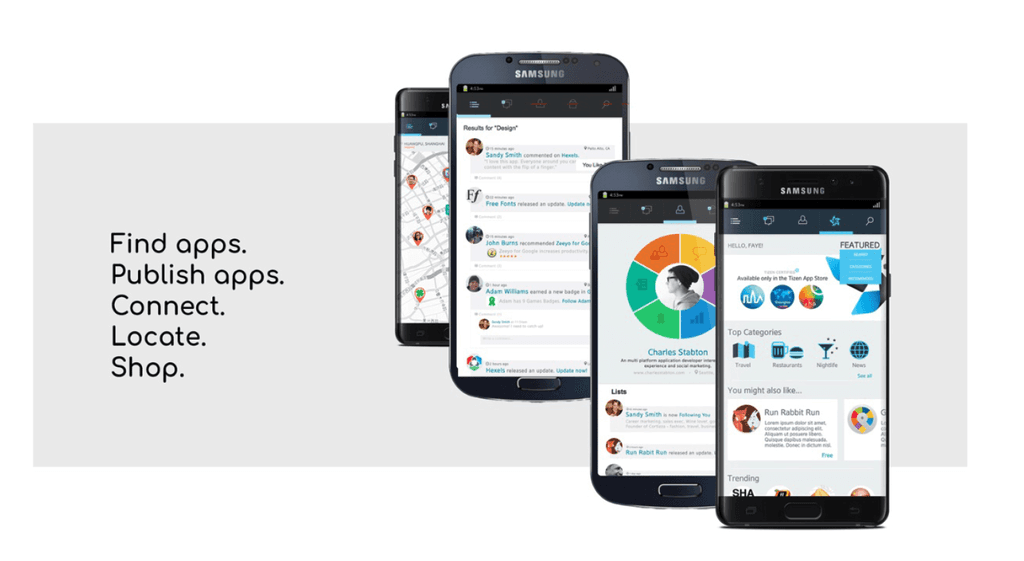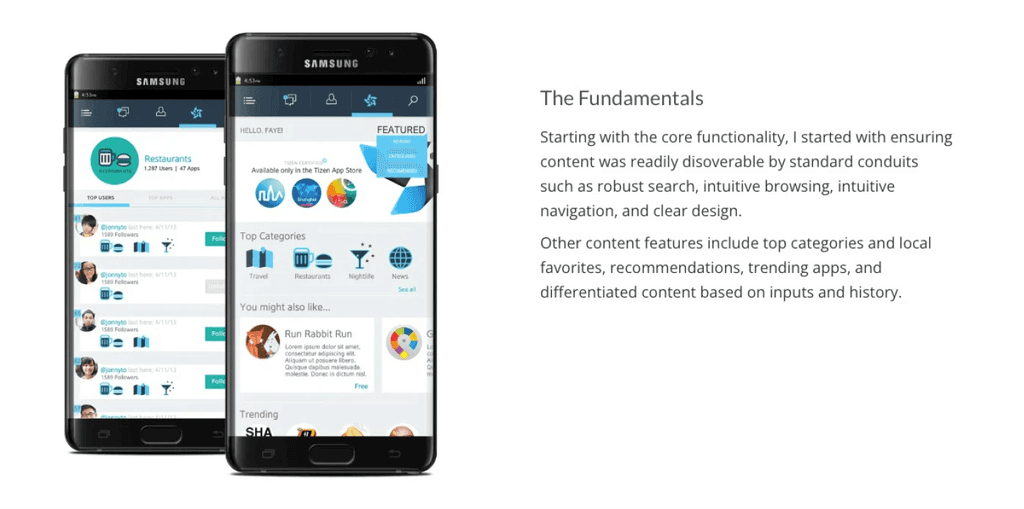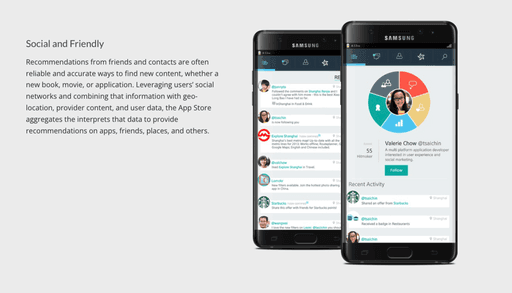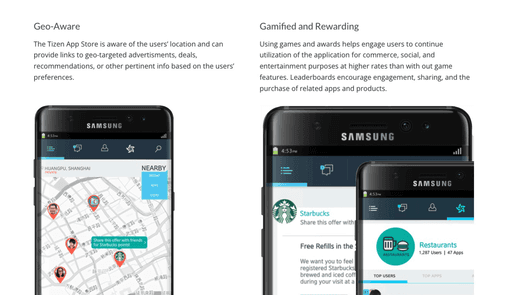Users need to find new apps, businesseses want to sell them
Samsung partnered with Deloitte Digital to design and develop the Samsung App Store to serve its diverse ecosystem of devices, including smartphones, smart TVs, and wearables. The goal was to create an intuitive marketplace that allowed users to easily discover, download, and interact with apps, while also providing a personalized, engaging experience. The challenge was to craft a seamless, user-centered app store that could handle millions of users across various devices and meet Samsung’s global standards for user experience.
Client
Pseudonym until website is published, October 2024
Employer
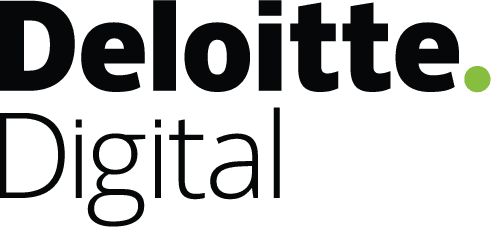
Project Duration
2 Months
Role
Lead CX Design Consultant
Scope
UX Research through high-fidelity wireframes illustrating the "happy path" through the native-mobile UX/UI designed for the application.
Final Deliverable
High-fidelity Sketch prototype, discovery and strategy documents, user stories and product requirement documentation, stakeholder presentations.
Tasks
Design a mobile-first app store that would…
Enhance app discoverability and personalization.
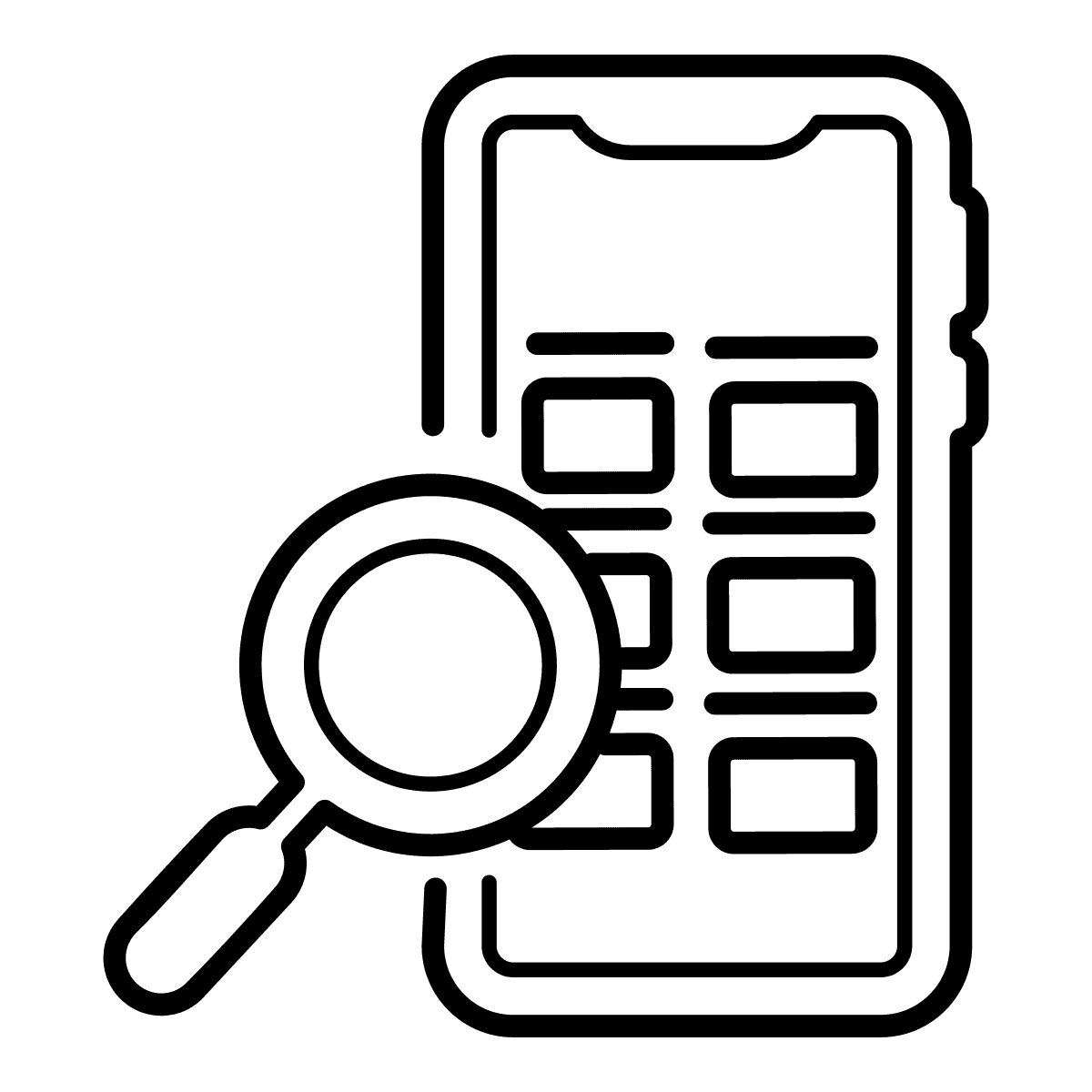
Foster user engagement through social-driven features and recommendations.

Ensure a consistent, user-friendly experience across multiple devices.

Ensure a consistent, user-friendly experience across multiple devices.

The final designs showcased an experience that is
Social, friendly, geo-aware and gamified
Using Figma, initial wireframes were created to visualize the app store’s structure, navigation, core user flows, and interactions. The design emphasized simplicity and ease of use, while introducing new design patterns and interaction models to deliver a delightful, useful experience.
A personalized homepage showcasing trending apps, recommendations, and user-driven content.
Intuitive search
Personalized app recommendations
Social elements (top apps, "your friends use," and engaging profiles.
Enhanced app detail pages with rich media and user-generated content to drive engagement.
A clean, consistent UI across all Samsung devices, ensuring seamless interaction across all Samsung models
Takeaway
A novel approach is engaging … useful if done right. A great team can make it happen fast.
Evolving HIG
Desiging only for one platform made some things easier, but Tizen being a new platform required balancing working with their Human Interaction Guidelines and our need to design as it evolved.
Go Lo-fi early
Paper prototyping proved super-valuable to test ideas. We wanted to really push some of the design patterns that were common, but not break the UX and frustrate users. We wanted to balance "wow" with "works."
Work together
Since our access to testing participants was extremely limited, and timline inclredibly short, the team relied on each other's expertise to collaborate and make decisions quickly and (mostly) accurately.. This fostered velocity, creativity, and teamwork.


